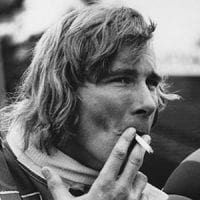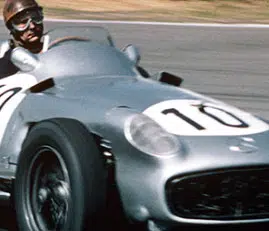Hunt began 1973 in Hesketh’s F2 Surtees TS15-Ford but a one-off F1 appearance in the Race of Champions raised the team’s ambitions. He drove a hired TS9 at Brands Hatch and finished a noteworthy third on his F1 debut. Rather than continue in F2, Hesketh acquired a March 731-Ford and Hunt joined the World Championship from the Monaco Grand Prix. He lost sixth position and a point on his debut with a late engine failure before finishing the next three races in the top six. That included fourth in his home race and third in the Dutch GP. Hunt capped a fine first F1 campaign by finishing second and setting the fastest race lap at Watkins Glen as he clinched eighth overall.
The patriotic team had even more ambitious plans for 1974 – introducing the Harvey Postlethwaite-designed Hesketh 308-Ford at the Race of Champions. Hunt qualified on pole position for that debut and won Silverstone’s International Trophy to suggest that the team was more than a band of happy-go-lucky gentry. Hunt finished third in Sweden, Austria (from 18th on the grid) and the United States but mechanical failures and a couple of avoidable accidents restricted him the eighth in the standings once more.
Second in the Argentine GP at the start of 1975, Hunt withstood Lauda’s race-long challenge at Zandvoort to score a popular breakthrough victory for Hesketh. He was also second in France and Austria during an impressive campaign. Both team and driver finished fourth in the World Championship but the strain of running an F1 team without commercial backing proved unsustainable. Hesketh withdrew his support from the team at the end of November leaving Hunt temporarily unemployed. However, Emerson Fittipaldi’s surprise move to his brother’s team suddenly left McLaren searching for a suitable replacement.
James Hunt’s 1976 F1 championship-winning year
The 1976 F1 season was one of the most memorable in the sport’s history. In truth, the year began with Lauda seemingly on course to retain his title for Ferrari with Hunt’s campaign initially dogged by controversy. Winner of non-championship races at Brands Hatch and Silverstone, the Englishman lost victory in the Spanish GP when his McLaren M23-Ford was found to be marginally too wide. Victory in France was followed two days later by news that the FIA had overturned his Spanish disqualification. Hunt was suddenly back with an outside chance of challenging for the title.
Further controversy followed at Brands Hatch when the victorious Hunt was excluded for switching to his spare car for the restarted race. The complexion of the whole season changed with Lauda’s crash during the opening laps at the Nurburgring. Hunt won that day and again at Zandvoort while the Austrian recovered from his near-fatal injuries. Remarkably, the badly scared Lauda was able to return at Monza, just five weeks after his accident. Forced to start from the back of the grid due to fuel irregularities, Hunt crashed out while Lauda finished in a brave fourth position. Hunt then converted pole position in Canada and at Watkins Glen into commanding victories to close the gap to just three points with a round to go. The Japanese finale was marred by torrential rain and Lauda withdrew from the race after just two laps due to the unsafe conditions. Hunt then recovered from a late stop for new dry tyres to snatch third-place and clinch the world title by a single point.






